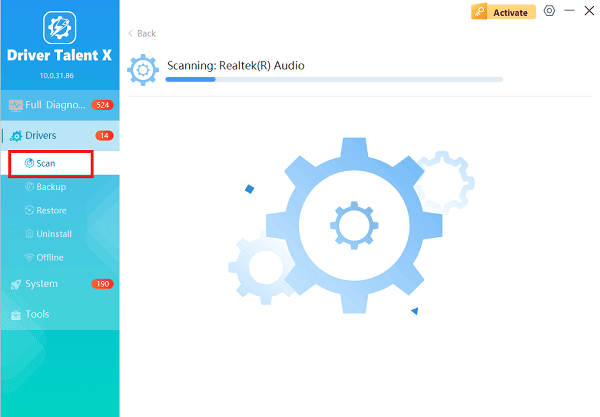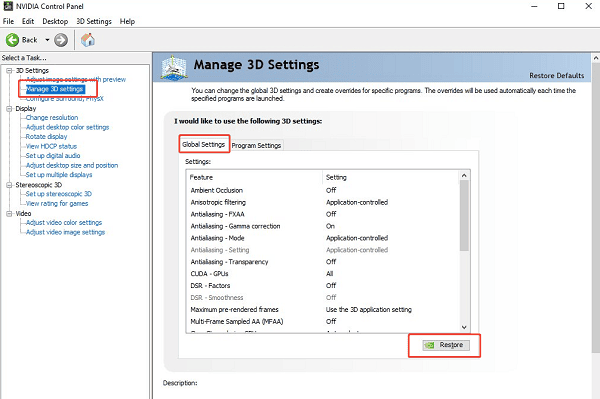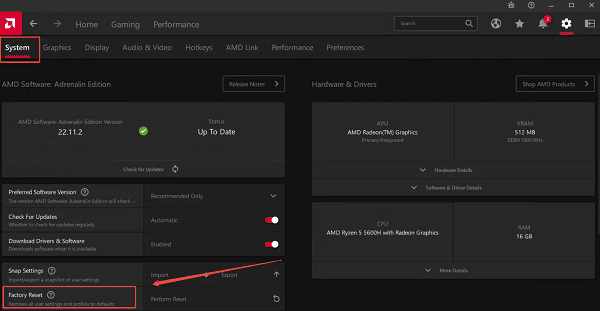
Graphics card settings are crucial for everything from gaming performance to video editing clarity. When your screen flickers, games crash, or colors look wrong, the culprit is often a corrupted or conflicting graphics driver or a misconfigured setting.
Learning how to reset your GPU settings can often resolve these issues instantly, restoring stability and performance. This guide offers a range of fixes, beginning with the most effective way to ensure your driver software is flawless.
Part I: Driver Update and Replacement
Driver corruption or incompatibility is the primary cause of many persistent display issues. A full, clean update or reinstall of your graphics driver is often the definitive solution.
Automatic Graphics Driver Update with Driver Talent X
Manually updating graphics drivers (NVIDIA, AMD, Intel) involves finding your exact model and downloading the correct file, which can be tedious and prone to human error. Using a professional driver utility ensures you get the exact, stable driver your system needs.
Download and Install:
Click the "Download" button to download the software package.
Install it on your Windows PC.
Run Scan:
Launch the software and go to "Drivers" > "Scan", click "Scan".
The program will automatically analyze your entire system, focusing on hardware components like your Graphics Processing Unit (GPU).

Install the Update:
After the scan is complete, the software will display a list of all drivers that need attention. Select the detected graphics driver and click the "Upgrade" button.

Driver Talent X will download and install the latest, digitally signed driver package for your specific GPU model.
Restart Your PC:
The screen may flicker during the installation process. Once complete, restart your computer to fully load the new, clean driver.
This should immediately resolve most driver-related display issues.
Part II: Quick & Built-in Driver Resets
If the issue is minor (e.g., sudden flickering or a temporary freeze), Windows offers an instant reset command.
Method 1: The Instant Keyboard Shortcut Reset
This is the fastest way to reset your graphics driver without restarting your entire PC or closing any applications.
Simultaneously press the following four keys: Windows Key + Ctrl + Shift + B.
Your screen will go black for a second, you will hear a sharp beep sound, and the screen will return to normal.
This command forces Windows to immediately restart the display driver stack, resolving many minor glitches, flickering, or display lag issues.
Method 2: Reset via Device Manager
This method forces Windows to reinitialize the driver by temporarily disabling and re-enabling it.
Press Windows Key + X and select "Device Manager".
Expand the "Display adapters" section.
Right-click on your graphics card (e.g., NVIDIA GeForce or AMD Radeon).
Select "Disable device". Confirm your action. Your screen may temporarily use a basic resolution.

Right-click on your graphics card again and select "Enable device". The screen will flicker and return to normal resolution.
Part III: Manufacturer Control Panel Resets
If you've customized settings in your GPU's control panel (e.g., 3D settings, color vibrance), a manual factory reset can eliminate performance conflicts.
Method 1: Reset NVIDIA Control Panel Settings
Right-click on your desktop and select "NVIDIA Control Panel".
In the left pane, navigate to "3D Settings" > "Manage 3D settings".
On the "Global Settings" tab, look for the "Restore" button (usually in the lower-right corner).

Click "Restore" to revert all 3D settings to NVIDIA's factory defaults.
Click "Apply" at the bottom right.
Method 2: Reset AMD Radeon Software Settings
Right-click on your desktop and select "AMD Radeon Software".
Click the Gear icon (Settings) in the top right corner.
Go to the "System" tab.
Look for the "Factory Reset" option. This will restore all Radeon software settings, including display and gaming profiles, to their default state.

Click "Yes" to confirm and follow any on-screen prompts.
Conclusion
Display issues and graphics errors are usually fixable through a targeted approach. The most powerful way to achieve system stability is by ensuring your graphics drivers are up-to-date and clean, easily accomplished using Driver Talent X.
By working through these non-destructive methods, you can quickly diagnose and resolve almost any graphics-related problem on your Windows PC.
See also:
Qualcomm Atheros QCA61x4A Driver Download and Installation Guide
Network Adapter Not Working on Windows? Try These Fixes









